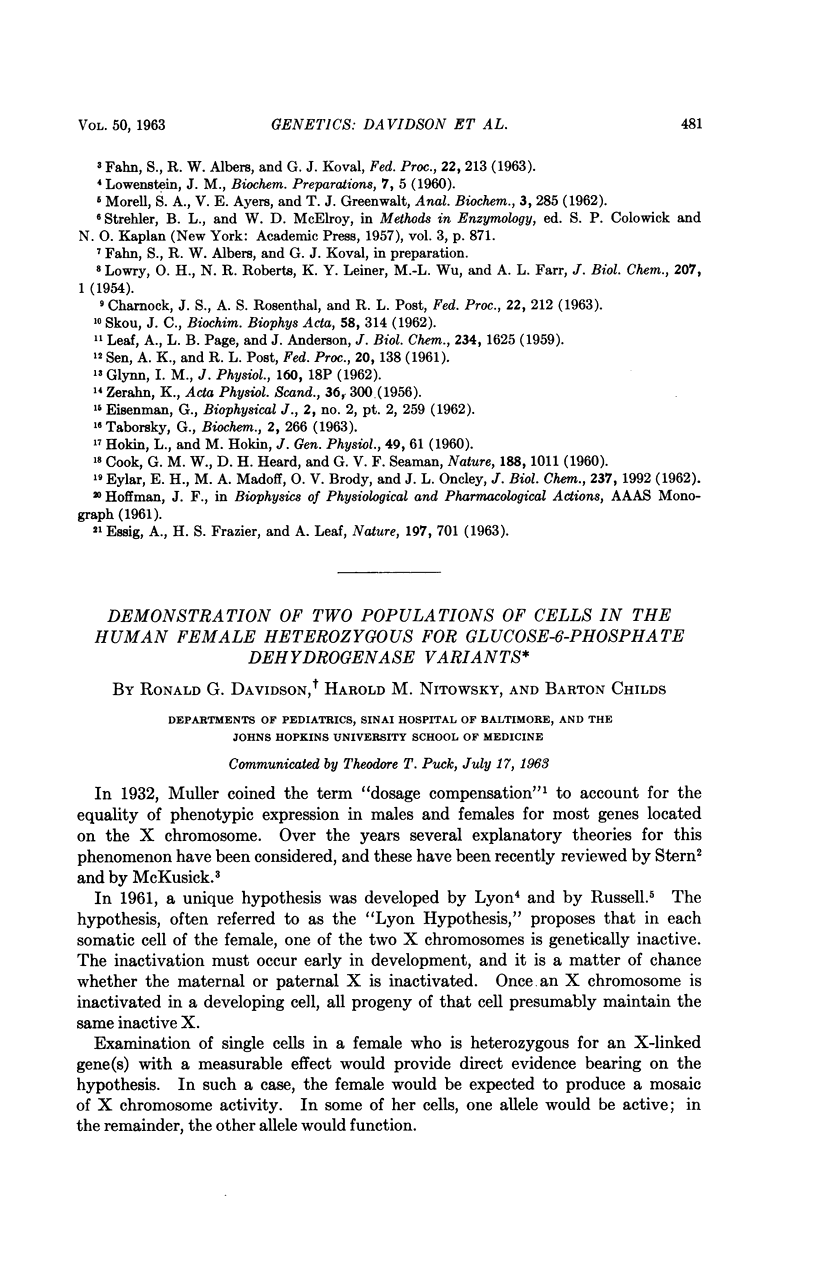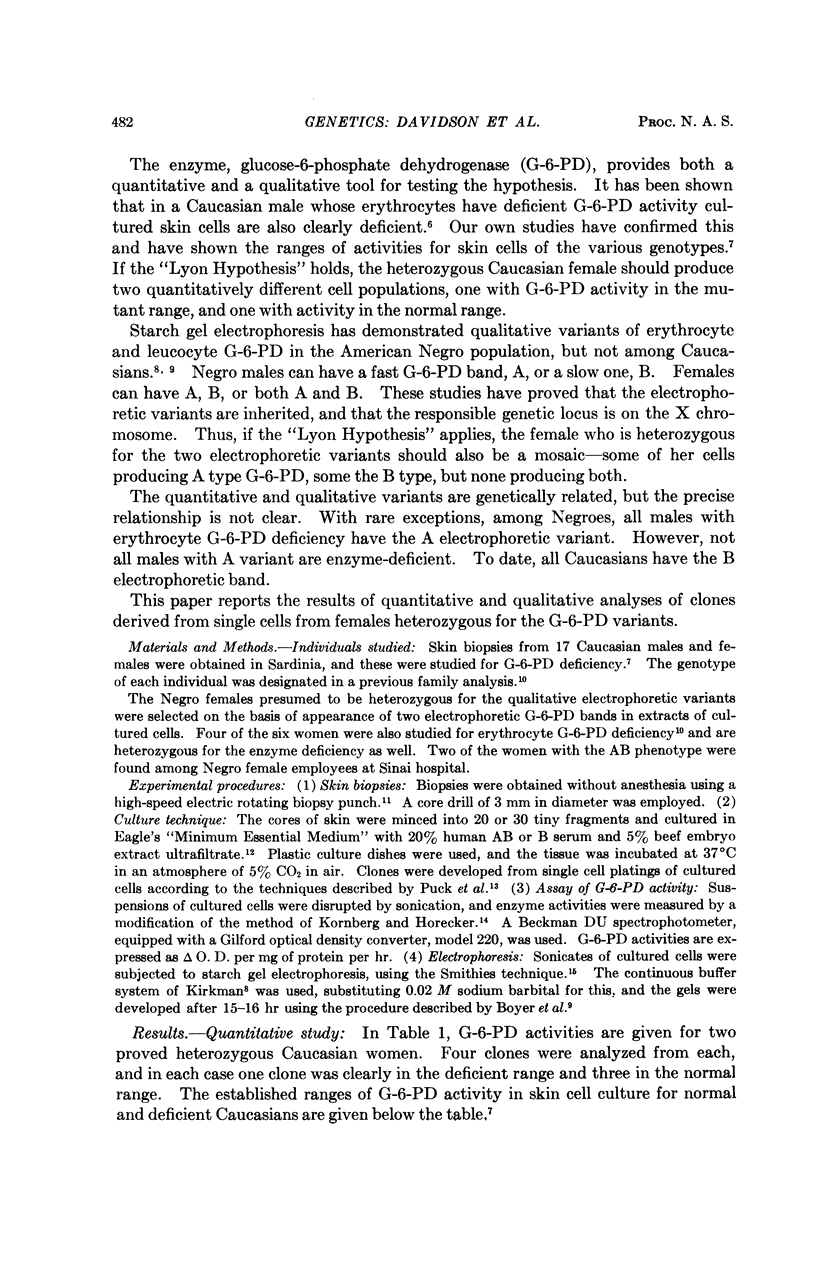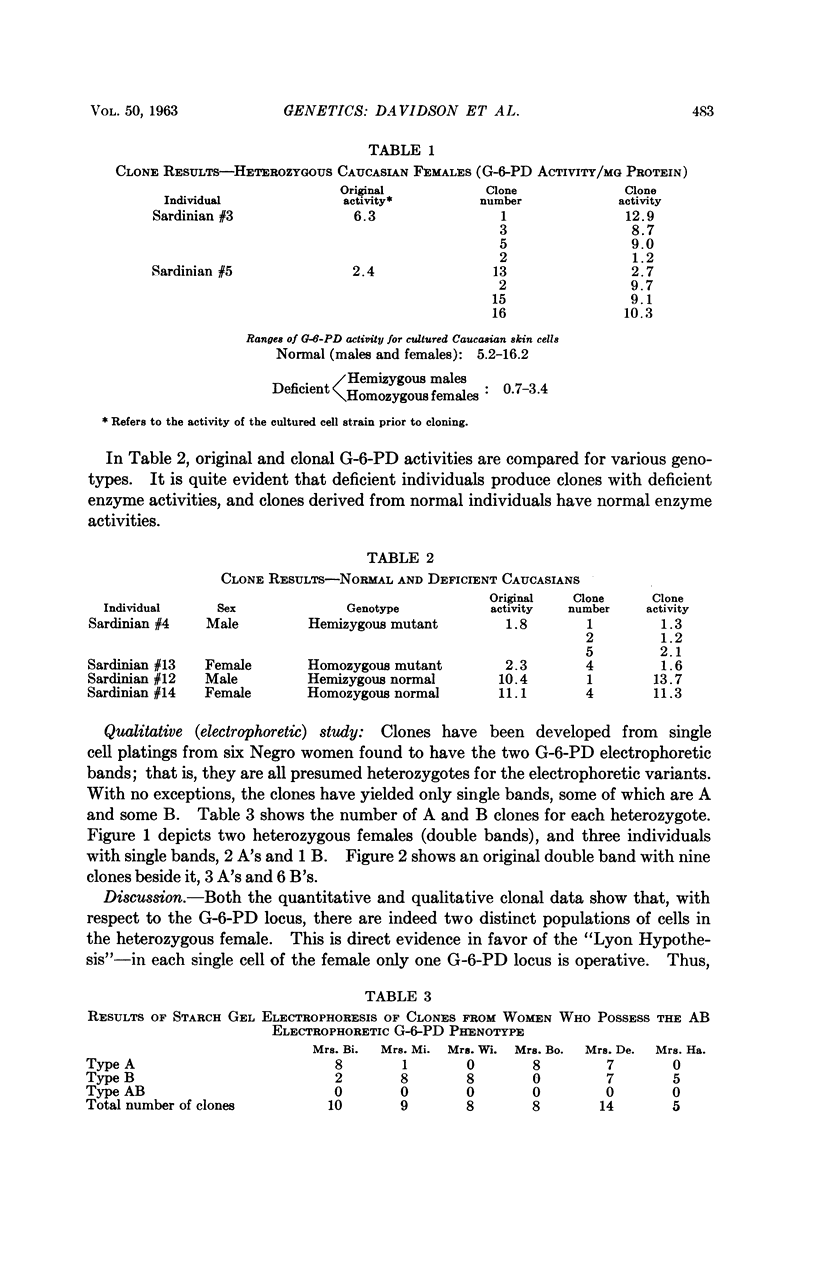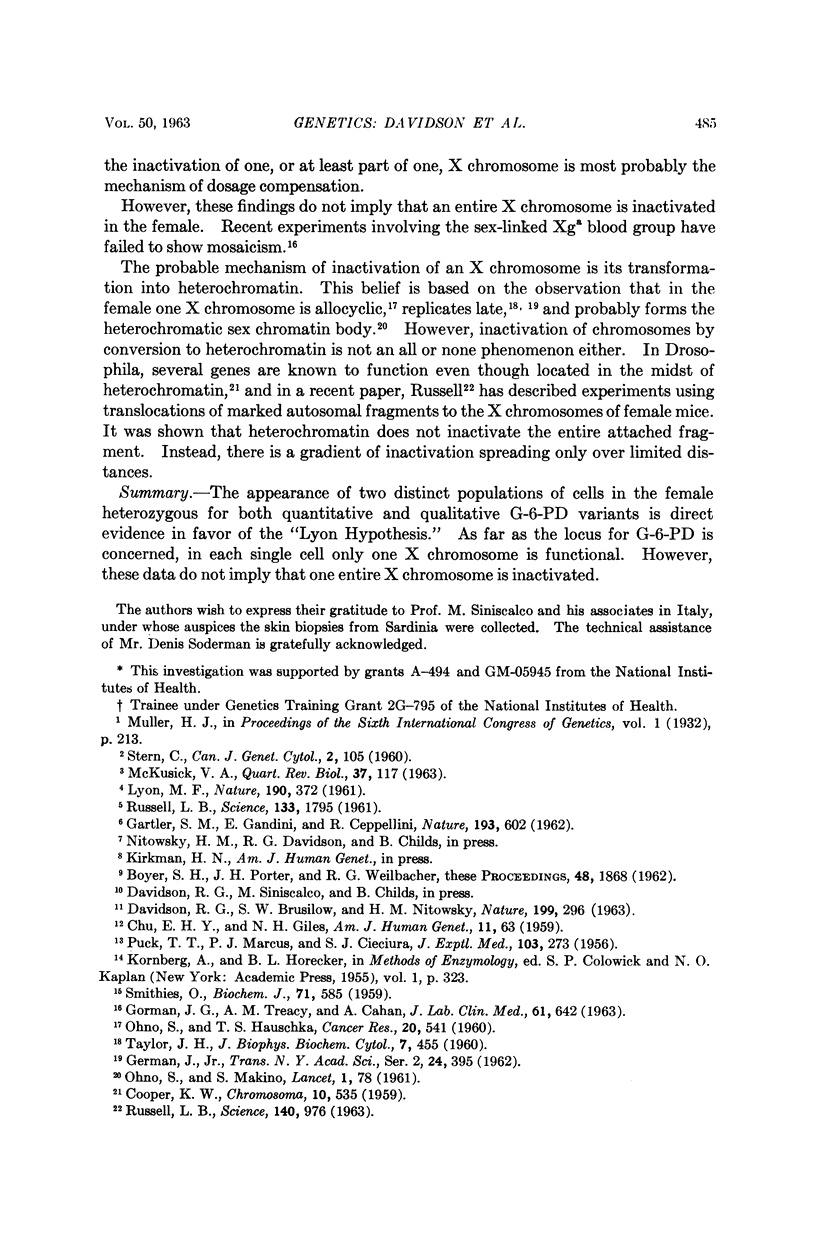Full text
PDF




Images in this article
Selected References
These references are in PubMed. This may not be the complete list of references from this article.
- BOYER S. H., PORTER I. H., WEILBACHER R. G. Electrophoretic heterogeneity of glucose-6-phosphate dehydrogenase and its relationship to enzyme deficiency in man. Proc Natl Acad Sci U S A. 1962 Oct 15;48:1868–1876. doi: 10.1073/pnas.48.10.1868. [DOI] [PMC free article] [PubMed] [Google Scholar]
- CHU E. H., GILES N. H. Human chromosome complements in normal somatic cells in culture. Am J Hum Genet. 1959 Mar;11(1):63–79. [PMC free article] [PubMed] [Google Scholar]
- COOPER K. W. Cytogenetic analysis of major heterochromatic elements (especially Xh and Y) in Drosophila melanogaster, and the theory of "heterochromatin". Chromosoma. 1959;10:535–588. doi: 10.1007/BF00396588. [DOI] [PubMed] [Google Scholar]
- DAVIDSON R. G., BRUSILOW S. W., NITOWSKY H. M. SKIN BIOPSY FOR CELL CULTURE. Nature. 1963 Jul 20;199:296–297. doi: 10.1038/199296b0. [DOI] [PubMed] [Google Scholar]
- GARTLER S. M., GANDINI E., CEPPELLINI R. Glucose-6-phosphate dehydrogenase deficient mutant in human cell culture. Nature. 1962 Feb 10;193:602–603. doi: 10.1038/193602a0. [DOI] [PubMed] [Google Scholar]
- GORMAN J. G., DI RE J., TREACY A. M., CAHAN A. The application of -Xga antiserum to the question of red cell mosaicism in female heterozygotes. J Lab Clin Med. 1963 Apr;61:642–649. [PubMed] [Google Scholar]
- LYON M. F. Gene action in the X-chromosome of the mouse (Mus musculus L.). Nature. 1961 Apr 22;190:372–373. doi: 10.1038/190372a0. [DOI] [PubMed] [Google Scholar]
- OHNO S., HAUSCHKA T. S. Allocycly of the X-chromosome in tumors and normal tissues. Cancer Res. 1960 May;20:541–545. [PubMed] [Google Scholar]
- OHNO S., MAKINO S. The single-X nature of sex chromatin in man. Lancet. 1961 Jan 14;1(7168):78–79. doi: 10.1016/s0140-6736(61)92120-1. [DOI] [PubMed] [Google Scholar]
- PUCK T. T., MARCUS P. I., CIECIURA S. J. Clonal growth of mammalian cells in vitro; growth characteristics of colonies from single HeLa cells with and without a feeder layer. J Exp Med. 1956 Feb 1;103(2):273–283. doi: 10.1084/jem.103.2.273. [DOI] [PMC free article] [PubMed] [Google Scholar]
- RUSSELL L. B. Genetics of mammalian sex chromosomes. Science. 1961 Jun 9;133(3467):1795–1803. doi: 10.1126/science.133.3467.1795. [DOI] [PubMed] [Google Scholar]
- RUSSELL L. B. Mammalian X-chromosome action: inactivation limited in spread and region of origin. Science. 1963 May 31;140(3570):976–978. doi: 10.1126/science.140.3570.976. [DOI] [PubMed] [Google Scholar]
- SMITHIES O. An improved procedure for starch-gel electrophoresis: further variations in the serum proteins of normal individuals. Biochem J. 1959 Mar;71(3):585–587. doi: 10.1042/bj0710585. [DOI] [PMC free article] [PubMed] [Google Scholar]
- TAYLOR J. H. Asynchronous duplication of chromosomes in cultured cells of Chinese hamster. J Biophys Biochem Cytol. 1960 Jun;7:455–464. doi: 10.1083/jcb.7.3.455. [DOI] [PMC free article] [PubMed] [Google Scholar]




